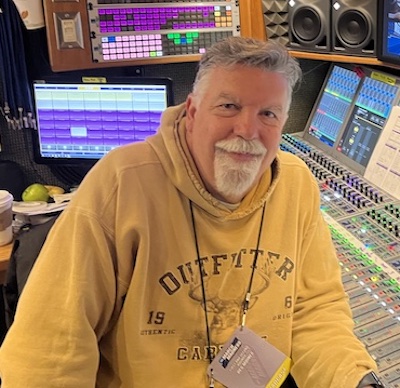TNT Sports Gets Its College Game On for March Madness Audio
Marching bands, crowds make up for lack of court FX and wired players
Story Highlights
TNT Sports’ production of the 2024 NCAA Division I Men’s Basketball Championship has all the audio-capture points that basketball fans expect to hear on television. The big difference is that, where NBA coverage goes deep — with player microphones, for example — to get more sound from the court, the college-hoops effort strives for a bigger sonic picture, letting the school bands set the tone for the broadcast sound.
“It’s like college football: the school band is one of the things that define college basketball, so you want to keep it out there as part of the signature sound,” says Dave Grundtvig, senior audio supervisor, remote operations, TNT Sports. “My big focus for the tournament is always the excitement of the fans, along with the bands to bring the energy and the color of the event.”

TNT Sports’ Dave Grundtvig: “My big focus for the tournament is always the excitement of the fans, along with the bands to bring the energy and the color of the event.”
The crowd fills the surround channels, and he will deploy a few additional microphones, determining their location in conjunction with the field producer and the league.
With most of the games played in NBA arenas, he notes, the necessary volume is built into the venues: “85% of second-round games are in NBA arenas, so they’re big, and they’re gonna be loud.”
The flip side of that, though, is that he expects to be battling the PA volume, a situation he says has become endemic to almost all sports. “All these venues want to create an in-arena experience for the fans sitting in the seats, and sometimes their [sound perspective] and mine, which is millions of people watching at home, are not in the same ballpark, no pun intended. With all professional sports now, it seems like we’re always fighting the PA.”
Studio Mics
At a time when contemporary music underscores much of broadcast sports, college marching bands bring a different kind of music, serving more like a Bollywood film score supporting the on-screen action. As a result, Grundtvig reaches for the microphones he would use in a music-recording studio rather than for the shotguns and dynamics usually found aboard production trucks. “I’m a big fan of using music-friendly microphones,” he says, “unconventional microphones that aren’t in the typical broadcast.”
Working with RF specialist Victor Victoria and court-effects mixer Dave Bjornson, Grundtvig will deploy a Shure KSM32 large-diaphragm cardioid condenser microphone flanked by a pair of Neumann KM184 small-diaphragm cardioid condenser mics at each end of the courts to pick up the music out of the crowd sound. These mics have their own place on his router, enabling them to be recalled, in stereo in the left and right L-C-R channels of the 5.1-surround broadcasts, for replays going into breaks.
Up on the nets, much of the mic deployment is typical of that for NBA games: dual-diaphragm Shure TwinPlex lavs attached to the nets, with custom contact mics of Grundtvig’s own design on the backboards.
“The NCAA is very protective of the players and coaches,” he notes. “There are restrictions as to where we can put mics on the floor, so my focus is on capturing the experience and energy and excitement in the venue: the bands, cheerleaders, and, of course, the fans. It’s mostly just the basic [NBA-type] basketball setup at that point. There are no work-arounds for that.”
Alternative Sound Sources
Unable to position microphones either on players or near the coaches or the scorers tables, the team relies on other locations to pick up the excitement of the iconic tournament. Multiple lavalier mics are mounted on the backboards and stanchions, and shotguns are aimed to pick up the sneaker squeaks around three-pointers. Much of the shows’ soundscape will comprise the arena ambience, especially the colleges’ bands and what everyone hopes will be full stands.
It helps that the upgraded PA systems being installed in arenas can produce extremely precise coverage of specific areas, mostly the stands. That allows placement of more-sensitive microphones closer to the intended sound sources.
In addition, some house mixers apply techniques specifically designed to help keep PA sound out of the broadcast microphones. For instance, Grundtvig says, a house mixer will duck the PA in the speaker enclosures hanging from the scoreboard, to minimize their bleeding into the broadcast microphones. “That’s literally right at our announcer table, and it makes all the difference in the world.”
March Madness sound has plenty of nuance, but mostly, he says, it’s the excitement unique to college sports. “For the first and second rounds, most of the games are in pro buildings, in conventional big arenas, and so you get that energy from all the fans. It’s exciting, especially if you have buzzer-beater–type games that are close. And the energy level stays high. It’s a fun time of year, and that’s the real beauty of it.”
